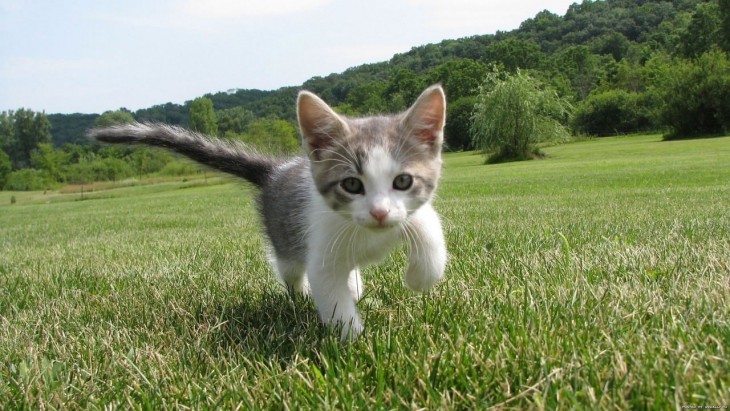Kittens are a joy to behold. If the kitten is still with its mother, you don’t have to do much. The mother takes care of everything. In cases where the mother is no longer around, or the kitten has been rejected by its mother, you will have to assume kitten-rearing duties.
We prepared the following as a general guide to help you feed and take care of a kitten from newborn to eight weeks of age. This guide is meant to be suggestive only.
Important: Consult with your veterinarian as to how much your kitten should weigh at each stage of its development. Keep track of track of a kitten’s weight to ensure it’s eating the right amount of food. Plus, it could help prevent obesity.
Feeding a Newborn Kitten – Ideally, find a surrogate mother cat who will be able to feed the kitten. Check with local shelters or a veterinarian. They should be able to help you find a suitable surrogate. If one is not available, you will need to feed the kitten yourself. A milk replacer specially formulated for kittens is the best way to go. When feeding, use a milk bottle with a nipple designed for kittens. Do not feed a kitten cow’s milk as this might give it diarrhea.
Newborns need lots of warmth. At the newborn stage, a kitten needs to stay warm. A warm water bottle wrapped in a towel, or a heating blanket with variable temperature settings should work just fine.
Handling a Newborn Kitten – At two weeks, you should be able to handle the kitten. The key is to be gentle. A kitten at this stage of life is very delicate and can easily get injured.
A Word About #1 and #2 – newborn kittens need a little coaxing when it comes to urinating and defecating. Usually, the mother does this with a few licks of her tongue. As a surrogate mom, all you need to do is wet a soft towel in warm water and gently massage the kitten’s anal and urinary regions after feeding. This technique will help stimulate the kitten’s need to relieve itself. By three weeks, kittens should be able to excrete on their own.
Feeding a Three to Four Week Old Kitten – Feed the little kit a gruel composed of milk replacer with dry kitten food or canned kitten food. Serve in a shallow bowl so the kitten can easily eat from it.
Teaching Kitty How to Use the Litter Box – At four weeks, you can train a kitten to use the litter box. The best way to do so is to place the kitten in the box after each meal. After a few tries, the kitten will get the idea.
Feeding a Six to Seven Week Old Kitten – By now your kitten should be able to eat dry or canned food without the need of a milk replacer. At this stage, consider giving it probiotics for cats to help build up its gastrointestinal health. At eight weeks, a kitten should be completely weaned. And it should also be fully litter-box trained.
Kitten Vaccines – should begin at about six weeks of age. Speak with your veterinarian about which vaccines to give and at what age.
In summary, taking care of a newborn kitten requires a lot of time and lots of tender loving care. For newborns, it would be ideal to find a surrogate mother cat to feed and take care of the kitten. If this is not possible, you can feed it a milk replacer formulated for kittens. At three to four weeks, you can start to introduce dry or canned food mixed with a milk replacer. Serve it in a shallow bowl. By six to seven weeks, you can serve it kitten food without the milk replacer for kittens.
Do you have tips for raising a kitten?
Share them with us in the comments section.





